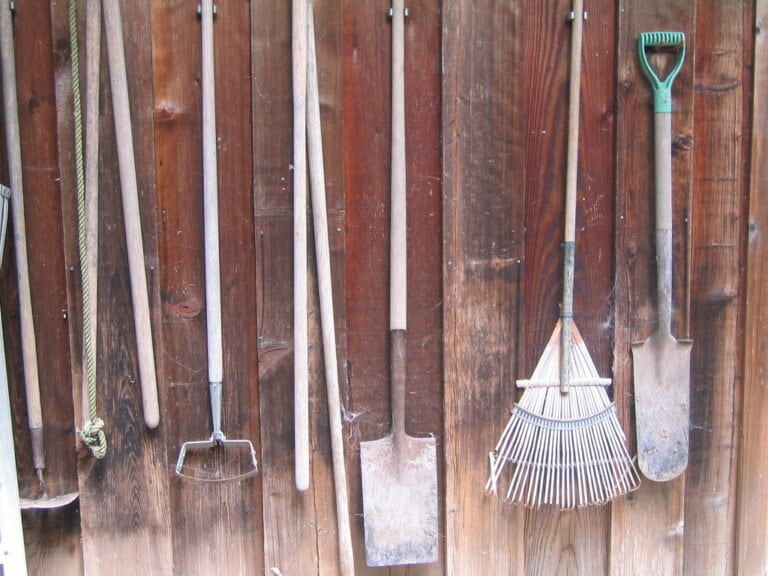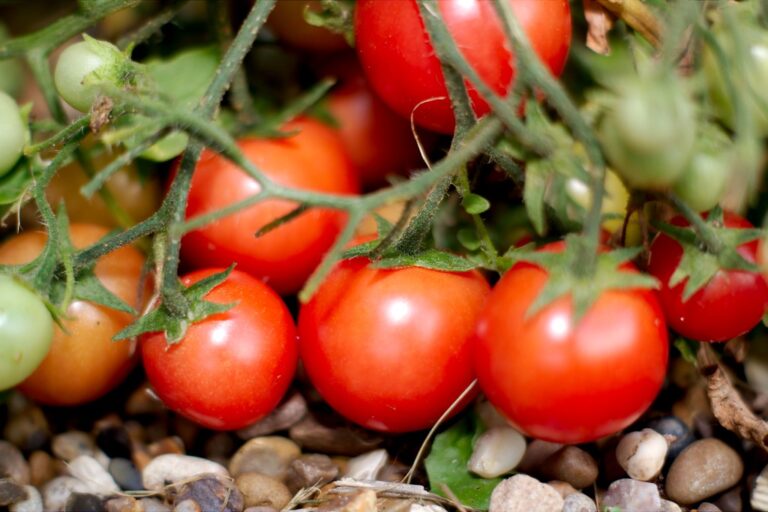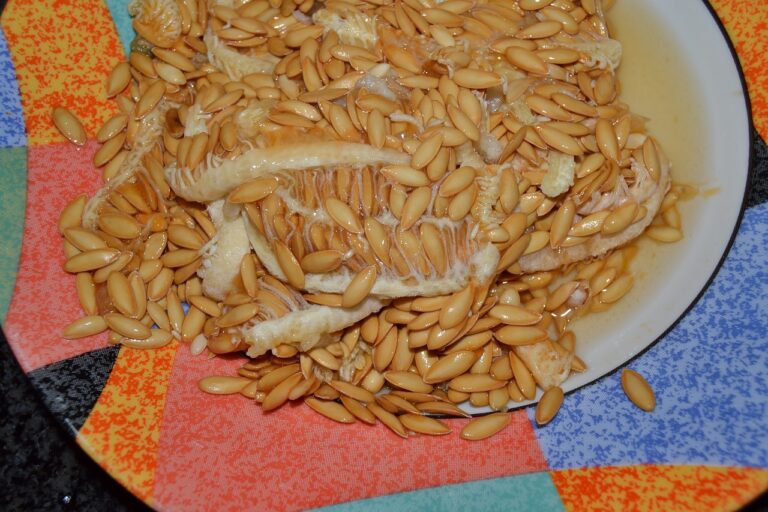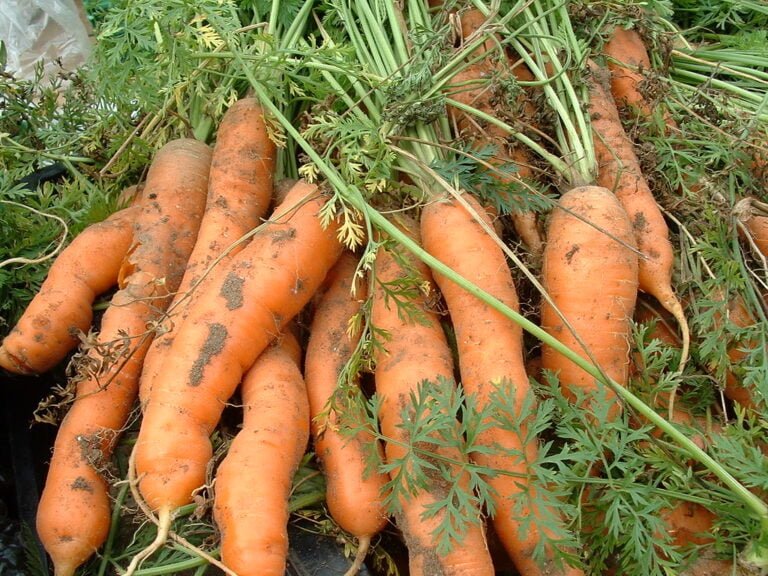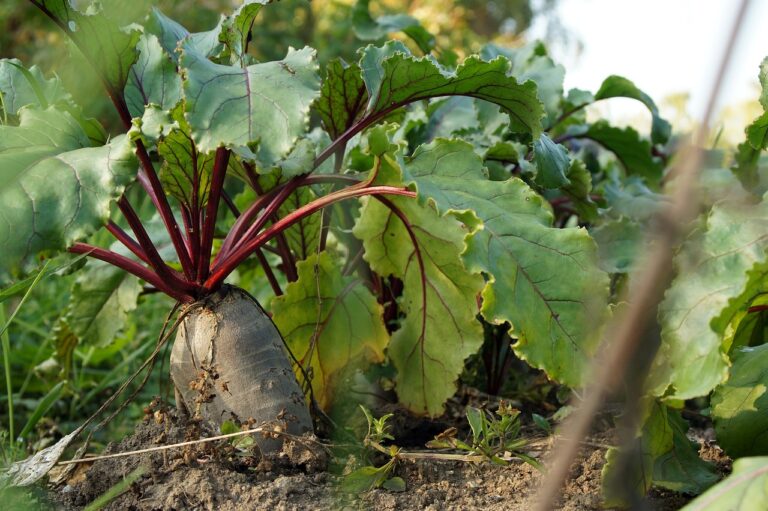How to Grow Green Beans in Your Garden
Planting green beans is easy. Wait until after the final frost. Make sure soil is 60°F. Use well-draining soil. Space seeds 1-2 inches apart, 1-1.5 inches deep. Consider trellises for pole beans. Choose the right variety depending on your needs. Provide 1-2 inches of water per week. Maintain soil pH 6.0-7.0. Monitor for pests like aphids and Japanese beetles. Harvest beans when young for best taste. Store in the fridge for a week. Proper care is essential for a plentiful harvest.
Planting Green Beans
When planting green beans in your garden, it is important to wait until after the final frost date and make sure the soil temperature reaches at least 60°F. Green beans thrive in well-draining soil that receives full sun exposure. To plant green beans, space the seeds 1-2 inches apart and plant them 1-1.5 inches deep in the soil. Proper spacing guarantees that the plants have enough room to grow without competing for resources.
Consider using trellises for pole beans to support their vertical growth. Trellises not only aid in the growth of the plants but also keep the beans off the ground, reducing the risk of rot and making harvesting easier. Watering is vital for green beans. It is best to water at the base of the plants and keep the soil consistently moist. However, be cautious not to overwater, as waterlogged soil can lead to disease issues such as root rot or fungal infections.
Choosing the Right Variety
When selecting a green bean variety, it’s important to take into account whether you prefer pole beans that climb or bush beans for compact growth. Your harvesting method, whether picking individual beans or whole plants, should also steer your choice. Additionally, opt for disease-resistant varieties and factor in your local climate to guarantee successful green bean cultivation.
Variety Selection Tips
In selecting the right variety of green beans for your garden, consider the growth habits and preferred harvesting method to guarantee a successful crop. For vertical growth and maximizing space, opt for Pole beans, which can reach heights of 10-12 feet. In compact spaces, Bush beans, growing 1-2 feet tall and wide, are ideal. Choose snap beans if you prefer fresh eating, or shell beans for dried consumption. To prevent common bean diseases, look for disease-resistant varieties like Provider or Blue Lake. Additionally, consider the climate suitability when selecting bean varieties; Kentucky Wonder thrives in warm climates, while Provider is better suited for cooler regions. These factors play an essential role in ensuring a bountiful harvest of delicious green beans.
Best Growing Conditions
For best growth and successful harvest of green beans in your garden, carefully selecting the right variety is crucial. When choosing between Pole and Bush types of beans, consider pole beans for vertical growth and space-saving in your garden, while bush beans are ideal for limited spaces or compact plant varieties. Select green bean varieties based on your preferred harvesting method, whether for fresh eating or canning. Choose disease-resistant varieties to minimize the risk of plant infections. Additionally, make sure the soil and climate are suitable for the green bean variety you choose to encourage excellent growth and yield. By planting the right varieties in the correct conditions, you can enjoy a bountiful harvest of delicious green beans.
Proper Plant Care
I’ll lead you through crucial aspects of properly caring for your green bean plants. Understanding their watering requirements, ensuring the soil is nutrient-rich within the ideal pH range, and implementing efficient pest control methods are key to fostering healthy growth and a bountiful harvest. Let’s delve into these critical points to help you cultivate thriving green beans in your garden.
Watering Requirements
To guarantee your green beans thrive, sustain consistent soil moisture by providing approximately 1-2 inches of water per week using soaker hoses or drip irrigation at the base of the plants, avoiding overhead watering to prevent diseases like powdery mildew. Green beans rely on proper watering to develop tender pods and maintain overall plant health. Consistent soil moisture is key to ensuring the growth and production of healthy green beans. Soaker hoses and drip irrigation systems deliver water directly to the roots, promoting efficient water usage and minimizing the risk of fungal diseases. By adhering to these watering requirements, you can support your green beans in reaching their full potential and enjoying a bountiful harvest.
Soil Nutrient Needs
Green beans, like most plants, have specific soil nutrient requirements essential for their growth and development. For best growth, make sure they are planted in well-draining soil enriched with organic matter. It is vital to maintain a pH range between 6.0 and 7.0, as green beans thrive in slightly acidic to neutral soil conditions. Adding compost to the soil can provide essential nutrients necessary for their development. However, caution must be taken to avoid over-fertilizing with nitrogen, as this can lead to excessive foliage growth at the expense of bean production. Additionally, the presence of nitrogen-fixing bacteria in the soil can improve nutrient uptake by green beans, promoting healthier plants and better yields.
Pest Control Methods
Regular monitoring of green bean plants for common pests such as aphids, Japanese beetles, and spider mites is essential for maintaining plant health and preventing infestations. To effectively control pest infestations, consider the following methods:
- Use Organic Insecticides: Opt for organic insecticides or insecticidal soaps to combat green bean pests without harmful chemicals.
- Hand-Picking Methods: Hand-picking pests off the plants is a simple yet effective way to keep infestations under control.
- Implement Floating Row Covers: Utilize floating row covers to physically protect green bean plants from common pests and prevent damage to leaves and pods.
Address any signs of trouble promptly, such as holes in leaves or damaged pods, to safeguard the health and productivity of your green bean plants while also taking care to prevent root rot by not overwatering.
Managing Pests and Diseases
When managing pests and diseases in your green bean garden, it is vital to monitor plants regularly for common threats such as aphids, Japanese beetles, and spider mites. These pests can quickly infest green bean plants, impacting their health and yield. To address infestations promptly, consider utilizing organic insecticides or hand-picking methods to control pests like Mexican bean beetles.
Implementing vital measures is important to protect your green bean plants. Using floating row covers can help shield the plants from pests, reducing the need for chemical treatments. Keep a close eye on your green bean plants for signs of bean rust, a common fungal disease. If detected, take necessary steps to prevent its spread among your plants to secure their well-being.
Furthermore, be cautious with watering practices to avoid root rot in green bean plants. Overwatering can lead to this issue, affecting plant health and productivity. By maintaining proper watering habits and ensuring good drainage, you can mitigate the risk of root rot and promote the best growth of your green beans.
Taking proactive steps to manage pests and diseases in your green bean garden will help maintain the health and vitality of your plants, ultimately leading to a successful harvest.
Harvesting Green Beans
Monitoring the growth of your green bean plants is essential as you prepare for the optimal time to harvest them for the finest flavor and texture. When it pertains to harvesting green beans, there are several key points to keep in mind:
- Harvesting Green Beans: It is advisable to harvest green beans when they are young and tender to guarantee the best flavor and texture. Avoid waiting too long as overripe beans can be tough and stringy.
- Continuous Production: Pick the pods regularly to stimulate the plant to continue producing more beans throughout the growing season. This practice will help you enjoy a consistent supply of fresh green beans.
- Maintaining Freshness: After harvesting, store the green beans in the refrigerator for up to a week to preserve their freshness. If you have excess beans, consider blanching and freezing them for long-term storage and use in your favorite dishes.
Remember to use scissors or pinch off the beans from the plant carefully to avoid damaging the vines. By following these tips, you can relish a plentiful harvest of green beans with the best flavor and quality.
Winter Preparations
To prepare your green bean garden for the winter season, start by disposing of the plant foliage in the compost to prevent disease buildup. Clearing the garden bed of any remaining debris and weeds creates a clean environment for the upcoming season. Consider covering the garden bed with a layer of mulch to protect the soil and provide insulation during the colder months.
After the green bean plants have finished producing, cut them at ground level. This not only tidies up the garden but also promotes decomposition, adding valuable organic matter back into the soil. It’s a sustainable way to nourish your garden for the next growing season.
For any harvested green beans, make sure they are stored properly. You can keep them in a cool, dry place for short-term use. If you want to enjoy your green beans later, freezing them after blanching is a great option for long-term storage. Blanching helps preserve the beans by stopping enzyme actions that can cause loss of flavor, color, and texture.

